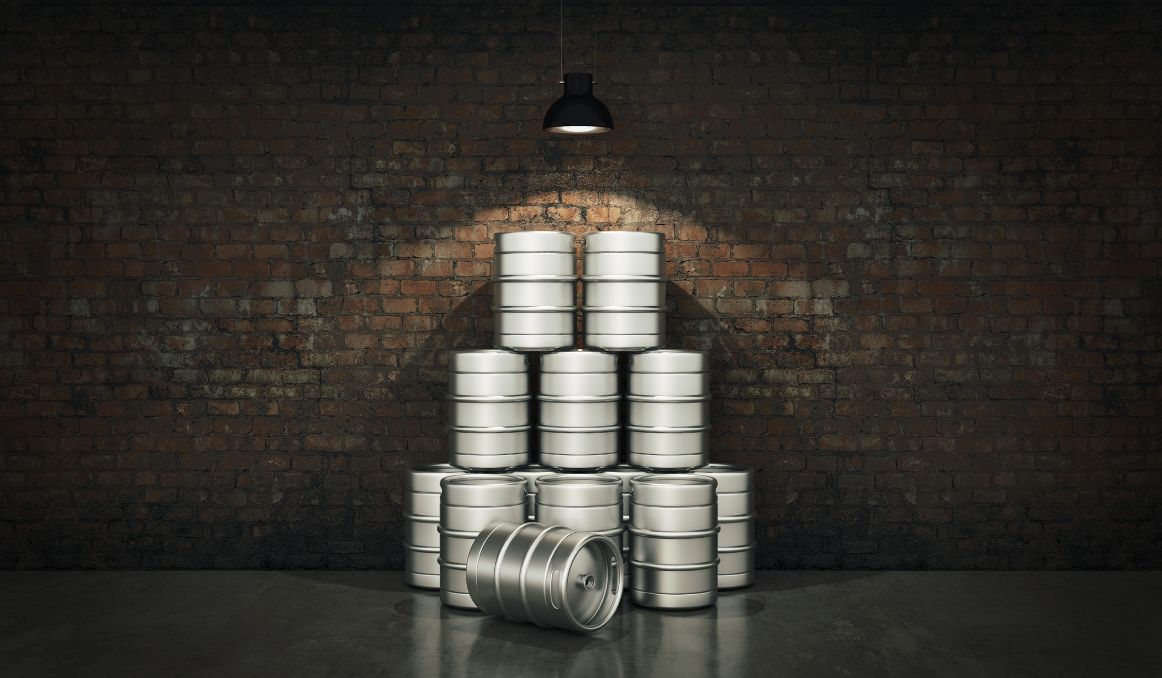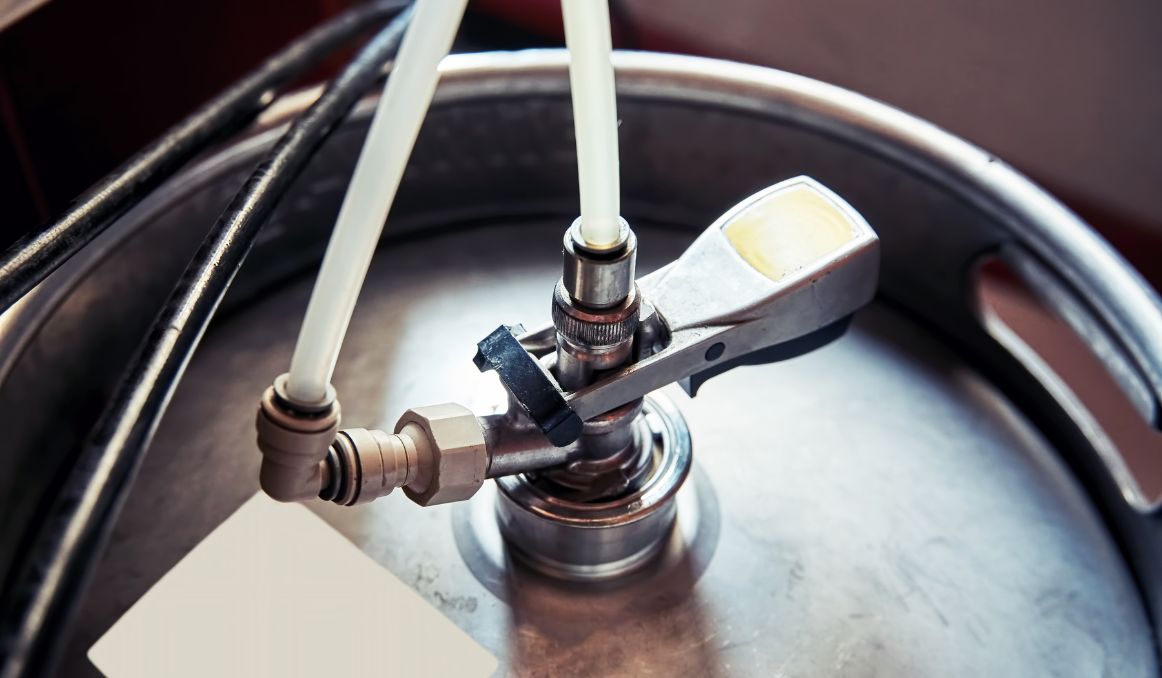Do I Need to Add Priming Sugar when Kegging?
If you’ve been asking yourself, “do I need to add priming sugar when kegging?” Look no further.
The answer is “you can.”
But you don’t have to.
But… you might want to.
Let’s talk about it.

What Is Priming Sugar and Why Do I Need It?
First, let’s get into priming sugar.
What is it and why do you need it?
Well, to answer the first part of the question, priming sugar is typically dry malt extract, that’s the barley malt concentrated down to its most sugary syrup form and then dehydrated to make a powder. You can also use liquid malt extract, which is the priming sugar still in its syrup form.
As to why you would need it, priming sugar is used to “prime” your beer before you package it, either in cans, bottles, or kegs.
What are you priming?
Carbonation.
Think about it.
When beer has completed the fermentation process, after a couple of weeks, it will almost immediately start to go flat.
All the carbon dioxide created by the yeast will either escape during packaging into the air or dissolve back into the brew.
And beer drinkers want that satisfactory crisp sound of the bottle opening when they get their beer.
Or they want the foam on the top of their fresh off the tap favorite beverage.
We can’t deny them that.
So, we add sugar immediately before bottling or kegging. The sugar attracts what little yeast is remaining in the beer after secondary fermentation, or some brewers will even toss in a little extra yeast, and just like that you have fresh, carbonated beer.
This process is called bottle conditioning in bottles or keg conditioning in kegs.
The Benefits of Kegging
Now, why would we want to use kegs? If you are not a major distributor with a demand for beer on tap by restaurants and bars, why waste the money on a keg and all of the other equipment necessary to keg when bottling seems so much simpler?
After all, to bottle beer, you simply need your fermentation vessel, a racking cane, the tubing to transfer your beer from vessel to bottle, and the bottles in terms of equipment.
And your sugar, of course.
For kegging, you need not only a keg, but usually also CO2, a CO2 regulator for the tank, and a specific cooler for your keg, plus the equipment listed above minus the bottles.
That can really add up for each batch of beer.
But there are some benefits to kegging, and those include the time saved in simply transferring your beer to a keg, not to mention the time saved not having to clean and sanitize all those bottles!
And the added benefit is that if you don’t want to use priming sugar to keg condition your beer, you can use the CO2 to force condition your beer, which will save you even more time.
The Downside of Kegging
At the same time, you will be not only investing more money in the process, but you also have to invest more time in educating yourself on how to force condition, how to work with CO2, and you have to have space for that extra cooler, or coolers plural if you plan to work with more than one keg.
A keg, or kegs, is much harder to store and make space for than a bunch of bottles.
It is a decision not made lightly and worth considering.
If you do decide to go with kegging for the benefits, you do not have to add priming sugar.
You can instead go the forced carbonation route.
Priming Sugar or Forced Carbonation

Priming sugar is probably the most popular way to keg condition your beer as it is the easiest way.
It requires entirely the same process you would go through to bottle condition, and you don’t need to work with extra equipment.
The downside to adding priming sugar is that the process takes longer, you will have to wait for the yeast to consume the new sugar, build up carbonation, and then smooth out added flavors and aromas.
This process usually takes a week from the time you add the priming sugar and close up the keg.
With forced carbonation, you can typically drink your beer in the same day, if not, the next day, after you have completed the process, meaning the same day you transfer your beer to the keg from your fermentation vessel.
Again, to do this forced carbonation, however, you need to be sure you have all the equipment on hand, plus a cooler to store your keg, and then you will need to manually add carbonation to your closed keg, release oxygen, add CO2, release oxygen, and gently swish and swirl your keg around to ensure all oxygen is removed from your tank and plenty of CO2 is added.
This requires a learning process.
And while many will argue against force carbonating light lagers, for instance, which already have a very delicate flavor and aroma, forced carbonation is worth the learning process as it allows you to avoid adding more sugars and yeasts to the brew, potentially creating new off flavors.
How to Add Priming Sugar when Kegging
If you do decide to add priming sugar, the process is simple.
You simply wait until secondary fermentation is complete, add your beer to the keg, and then stir in priming sugar.
Seal your keg, attach a CO2 line, and purge the headspace in your keg to remove all oxygen, replacing it with CO2.
Now you can disconnect the line and store your keg in a cooler for at least 10 days to let the priming sugar do its work.
Conditioning your beer in this way takes a bit longer than forced carbonation, but it will save you money on CO2.
Cheers!
Are you still pitching fresh yeast every time? By reusing your yeast, you can save up to hundreds of thousands of dollars per year on just yeast alone!
Join the hundreds of brewers from all around the world using the smartest Automated Yeast Cell Counter! Request a Free Demo Account today and experience firsthand how Oculyze can take your brewery to the next level!
Sources:
Stay on top on important fermentation insights – subscribe to our monthly newsletter and receive a hand-picked selection of our most relevant articles straight to your inbox.
Never miss a beat and get real time updates with a new article each workday by subscribing our social media channels.
Instagram | Facebook | Twitter | YouTube


